
Cusco: The Heartbeat of Ancient Andean Civilization
Explore the Cusco Region: A Journey Through Time with Majestic Landscapes, Ancient Ruins, and Rich Cultural Heritage in the Heart of Peru.
Nestled high in the Peruvian Andes, the Cusco Region is a treasure trove of history, culture, and natural beauty. Once the capital of the Inca Empire, this region boasts a rich tapestry of archaeological wonders, including the world-renowned Machu Picchu. As you wander through its cobbled streets and gaze upon centuries-old stonework, you'll feel as if you've stepped back in time. Cusco city itself is a UNESCO World Heritage site, brimming with colonial charm and vibrant markets where you can find traditional textiles and local crafts. The nearby Sacred Valley offers a serene escape with its lush landscapes, where you can explore ancient terraces, visit local villages, and experience the warm hospitality of the Andean people. For the adventurous, the Cusco Region offers diverse trekking opportunities, from the famous Inca Trail to lesser-known paths that lead to remote ruins and breathtaking vistas. Whether you're a history buff, a culture enthusiast, or an outdoor adventurer, the Cusco Region promises an unforgettable journey into the heart of Peru.
Local tips in Cusco Region
- Acclimate to the altitude by spending a few days in Cusco before heading to higher elevations.
- Purchase your tickets for Machu Picchu well in advance, as they can sell out quickly.
- Try coca tea to help with altitude sickness; it's a traditional remedy used by locals.
- Visit the local markets for unique souvenirs and traditional Peruvian cuisine.
- Consider hiring a local guide to gain deeper insights into the region's rich history and culture.
Cusco: The Heartbeat of Ancient Andean Civilization
Nestled high in the Peruvian Andes, the Cusco Region is a treasure trove of history, culture, and natural beauty. Once the capital of the Inca Empire, this region boasts a rich tapestry of archaeological wonders, including the world-renowned Machu Picchu. As you wander through its cobbled streets and gaze upon centuries-old stonework, you'll feel as if you've stepped back in time. Cusco city itself is a UNESCO World Heritage site, brimming with colonial charm and vibrant markets where you can find traditional textiles and local crafts. The nearby Sacred Valley offers a serene escape with its lush landscapes, where you can explore ancient terraces, visit local villages, and experience the warm hospitality of the Andean people. For the adventurous, the Cusco Region offers diverse trekking opportunities, from the famous Inca Trail to lesser-known paths that lead to remote ruins and breathtaking vistas. Whether you're a history buff, a culture enthusiast, or an outdoor adventurer, the Cusco Region promises an unforgettable journey into the heart of Peru.
When is the best time to go to Cusco Region?
Iconic landmarks you can’t miss
Historic Sanctuary of Machu Picchu
Discover the breathtaking ruins of Machu Picchu, an ancient Incan citadel nestled in the Andes, rich in history and stunning natural beauty.

Plaza Mayor de Cusco
Discover the vibrant heart of Cusco at Plaza Mayor, where history, culture, and lively events converge in a stunning colonial setting.
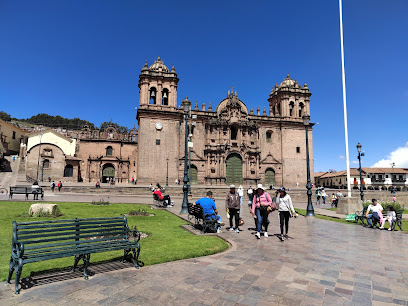
Mercado Central de San Pedro
Explore the Mercado Central de San Pedro in Cusco, a vibrant market brimming with local produce, traditional food, and unique handicrafts, capturing the essence of Peruvian culture.

Saqsaywaman
Discover the ancient Incan fortress of Saqsaywaman, a UNESCO World Heritage Site with breathtaking views and rich history in Cusco, Peru.

Qorikancha
Discover the fascinating history of Qorikancha, the Temple of the Sun, where Incan spirituality meets colonial heritage in the heart of Cusco, Peru.

Twelve Angled Stone
Discover the Twelve Angled Stone in Cusco, a masterpiece of Incan architecture that showcases the brilliance of ancient engineering amidst a vibrant historical setting.

Moray
Unveil the secrets of the Incas at Moray, where ancient agricultural terraces meet stunning Andean landscapes.

Q'enco Archaeological Complex
Explore the ancient secrets of the Q'enco Archaeological Complex, a sacred Incan site steeped in history and breathtaking Andean beauty.

Plaza Túpac Amaru
Discover the serene beauty and cultural vibrancy of Plaza Túpac Amaru in Cusco, a perfect retreat for tourists seeking relaxation and local experiences.

Palacio del Inka, a Luxury Collection Hotel, Cusco
Luxurious stay in the historic heart of Cusco, blending rich culture with exceptional comfort and elegance.

Church and Convent of Santo Domingo of Guzmán
Discover the historical grandeur of the Church and Convent of Santo Domingo, a stunning blend of Incan and colonial architecture in the heart of Cusco.

Tambomachay
Explore Tambomachay, the ancient Incan Water Temple in Cusco, Peru, renowned for its stunning waterworks and rich archaeological heritage.

Puka Pukara Archaeological Complex
Explore the ancient Inca architecture at Puka Pukara, a stunning archaeological site near Cusco, surrounded by breathtaking Andean landscapes.

Centro Qosqo de Arte Nativo
Discover the essence of Peruvian culture at Centro Qosqo de Arte Nativo, where traditional music and dance come alive in the heart of Cusco.

Sagrado Garden
Discover tranquility in Sagrado Garden, Cusco's lush oasis showcasing native flora and cultural heritage amidst the historical beauty of Peru.

Unmissable attractions to see
Moray
Explore Moray, the fascinating archaeological site in Peru with unique circular terraces that reveal the agricultural genius of the Incas.

Tupac Amaru Square
Experience the vibrant culture and history of Cusco at Tupac Amaru Square, a beautiful park filled with local charm and stunning architecture.

Church and Convent of Santo Domingo of Guzmán
Explore the Church and Convent of Santo Domingo of Guzmán in Cusco, where Incan history and colonial artistry unite in a captivating cultural experience.

Humedal de Huasao
Explore the breathtaking biodiversity of Humedal de Huasao, a tranquil ecological park perfect for nature lovers and birdwatching enthusiasts in Peru.

Sagrado Garden
Explore Sagrado Garden in Cusco, a tranquil oasis filled with vibrant flora and serene pathways, perfect for relaxation and reflection amid historical treasures.
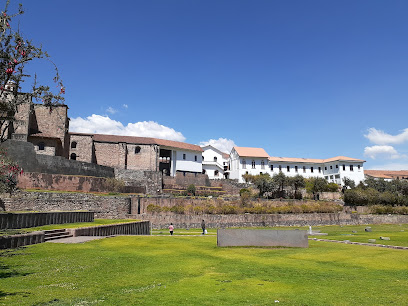
Mirador desde el Cristo Blanco
Experience breathtaking views of Cusco at the Mirador desde el Cristo Blanco, an iconic observation deck offering a glimpse into the city's rich culture and stunning landscapes.

Limacpampa
Explore Limacpampa, a serene city park in Cusco, where nature meets history and local culture thrives amidst beautiful landscapes.

Sapantiana Aqueduct
Experience the breathtaking Sapantiana Aqueduct in Cusco, a marvel of Incan engineering surrounded by stunning landscapes and rich history.

Regional Historical Museum of Cusco
Discover the rich history and culture of Peru at the Regional Historical Museum of Cusco, where ancient artifacts and colonial treasures await.

Awana Kancha
Explore Awana Kancha, a cultural gem near Cusco, showcasing Andean traditions through textiles, wildlife encounters, and immersive experiences.

Rumicolca
Explore Rumicolca: A breathtaking archaeological site showcasing the remarkable architecture of the ancient Inca civilization near Cusco.

Museo y Catacumbas del Convento de San Francisco de Asís de Cusco
Explore the fascinating history of Cusco at the Museo y Catacumbas del Convento de San Francisco de Asís, where art and spirituality intertwine.
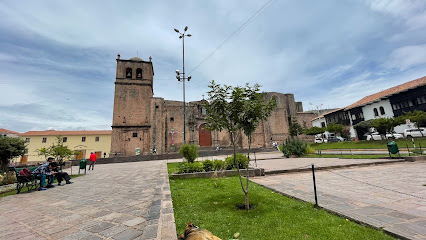
Sacred Rock at Machu Picchu
Discover the spiritual and cultural significance of the Sacred Rock at Machu Picchu, a stunning gem nestled in the heart of the Andes.

San Blas View Point
Experience the breathtaking views of Cusco from San Blas View Point, a tranquil observation deck that offers stunning panoramas of the city and its surroundings.

Coca Museum
Explore the deep cultural roots of coca at the Coca Museum in Cusco, where tradition meets history in a captivating exhibit.

Essential places to dine
Republica Del Pisco - Cusco
Savor authentic Peruvian cuisine and creative cocktails at Republica Del Pisco in the heart of Cusco's historical district.

Organika Restaurant
Discover the authentic flavors of Peru at Organika Restaurant in Cusco – where local ingredients meet innovative cuisine.

Chicha por Gaston Acurio
Discover authentic Peruvian flavors at Chicha por Gaston Acurio in Cusco—where tradition meets culinary excellence.

Yaku Restaurant
Discover Yaku Restaurant in Cusco: A modern twist on traditional Peruvian cuisine awaits you in this vibrant gastropub.

Cicciolina
Discover Cicciolina in Cusco: An exquisite Italian dining experience blending authentic flavors with local charm.

Nuna Raymi
Experience the authentic flavors of Peru at Nuna Raymi in Cusco - where tradition meets taste in every dish.

KUSYKAY Peruvian Craft Food
Discover authentic Peruvian flavors at KUSYKAY in Cusco—where tradition meets culinary artistry in every dish.
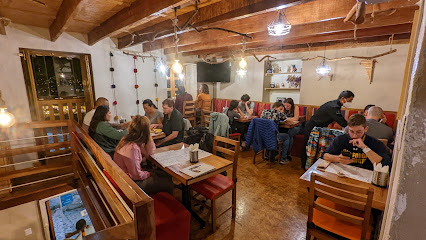
Uchu Peruvian Steakhouse
Experience the best of Peruvian cuisine at Uchu Peruvian Steakhouse in Cusco - where tradition meets culinary excellence.

Ceviche Seafood Kitchen
Experience authentic Peruvian flavors at Ceviche Seafood Kitchen in Cusco - where fresh seafood meets tradition.
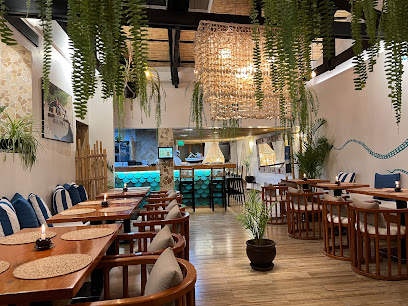
Carpe Diem Cucina Italiana
Discover authentic Italian flavors at Carpe Diem Cucina Italiana in Cusco - where every pizza tells a story.

Inkazuela
Experience authentic Peruvian cuisine at Inkazuela, where tradition meets flavor in the heart of Cusco's historic district.

PER.UK
Discover exquisite gluten-free cuisine at PER.UK in Cusco – where tradition meets modern gastronomy.

Tunupa Restaurant
Discover authentic Peruvian flavors at Tunupa Restaurant in Cusco - a culinary delight steeped in tradition.

Mistura Grill Cusco
Discover authentic Peruvian cuisine at Mistura Grill Cusco - where tradition meets flavor in a charming setting.

Mama Seledonia
Discover authentic Peruvian cuisine at Mama Seledonia in Cusco's historic center - a culinary gem for every traveler.

Markets, malls and hidden boutiques
Real Plaza Cusco
Experience the best of local shopping and dining at Real Plaza Cusco, a vibrant mall in the heart of the city.

ARTESANIAS LLANCAQMAKI
Explore Artesanias Llancaqmaki in Cusco for exquisite Peruvian crafts and unforgettable souvenirs that celebrate local heritage.

Handicraft Center Cusco
Explore the Handicraft Center Cusco, a vibrant marketplace of unique Peruvian arts and crafts, perfect for souvenir shopping and cultural immersion.

Centro Comercial Cusco
Discover the bustling Centro Comercial Cusco: a shopping paradise blending local crafts, international brands, and delicious dining experiences in the heart of Cusco.

Rumbo Shop Aeropuerto Cusco
Explore Rumbo Shop at Cusco Airport for unique gifts, artisanal chocolates, and local crafts that capture the essence of Peru.

EKEKOS SAN BLAS -art & COLORS
Explore EKEKOS SAN BLAS in Cusco, where art meets tradition and every piece tells a story of Peruvian heritage.

hilo
Experience unique handmade clothing at Hilo, a charming store in Cusco's historic center, celebrating local craftsmanship and culture.

La Vicuñita Factory
Discover the heart of Peruvian textile culture at La Vicuñita Factory, where traditional craftsmanship meets modern style.

Alpaca Tamon® | Alpaca Factory Outlet
Explore the heart of Peru at Alpaca Tamon®, your go-to destination for exquisite alpaca clothing and unique handicrafts in Cusco.

Michell Cusco
Discover the vibrant shopping scene at Michell Cusco, where traditional Peruvian culture meets modern retail in the heart of the Andes.

KUNA Plaza de Armas
Discover KUNA Plaza de Armas, where authentic Peruvian fashion meets exquisite craftsmanship in the heart of Cusco.

Amaru Mayu Art Jewelry
Discover the essence of Peruvian craftsmanship at Amaru Mayu Art Jewelry in Cusco, where tradition meets contemporary design.

Concept store
Discover unique Peruvian fashion at this charming clothing store in Cusco's historic center, perfect for souvenirs and local style.

Columbia - Real Plaza Cusco
Discover premium outdoor clothing and equipment at Columbia - Real Plaza Cusco, your go-to shop for adventure in the Andes.

Souvenir and woodworking store
Explore authentic Peruvian craftsmanship at the Souvenir and Woodworking Store in Cusco, where every item tells a story.

Essential bars & hidden hideouts
LIMBUS RESTOBAR
Discover culinary delights and breathtaking views at Limbus Restobar in Cusco, the perfect blend of Peruvian flavors and stunning panoramas.

Molly's Irish Bar and Restaurant Cusco
Experience the warmth of Irish hospitality at Molly's Irish Bar and Restaurant in Cusco, where great food, live music, and a vibrant atmosphere await.
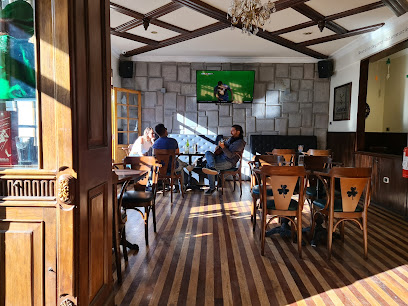
La chupiteria the shot bar
Discover the vibrant nightlife of Cusco at La Chupitería, the premier shot bar offering unique drinks and an electric atmosphere for unforgettable evenings.
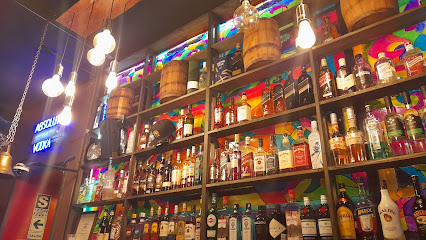
Ukukus Music Club - Bar
Discover the heart of Cusco's nightlife at Ukukus Music Club - a lively bar and dance club offering music, food, and fun!

Paddy's Irish Pub
Discover the vibrant blend of Irish and Peruvian culture at Paddy's Irish Pub in the heart of Cusco, perfect for unwinding after a day of exploration.

Indigo Bar Restaurant
Discover the perfect blend of Thai flavors and grill favorites at Indigo Bar Restaurant, a lively culinary hotspot in Cusco's historic center.

La Fabrica Sports Bar
Discover the excitement of sports and local culture at La Fabrica Sports Bar in Cusco, where every game is a celebration.

Los Perros
Discover the vibrant atmosphere of Los Perros in Cusco, where local flavors and a lively ambiance create unforgettable experiences.

El Duende Resto Lounge
Experience the vibrant atmosphere and exquisite flavors at El Duende Resto Lounge, the perfect dining spot in the heart of Cusco.

Blackbird Club
Experience the vibrant nightlife at Blackbird Club in Cusco, where live music and diverse drinks create an unforgettable atmosphere.
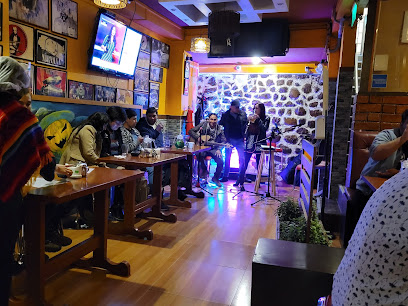
Rock House Cafe
Experience the vibrant nightlife of Cusco at Rock House Cafe, where delicious gastropub fare meets electrifying live music in a lively atmosphere.

Black Cat Bar Cusco - Craft Cocktails & Spirits
Discover the exquisite craft cocktails at Black Cat Bar Cusco, where local flavors meet a vibrant atmosphere in the heart of the city.

El Viejo Bar
Experience the vibrant nightlife of Cusco at El Viejo Bar, where locals and tourists gather for delicious drinks and unforgettable memories.
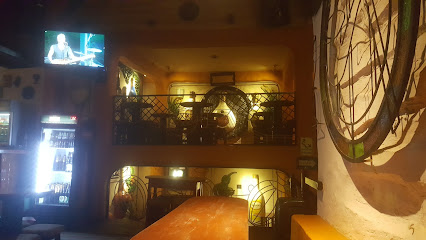
Papacho Bar Cultural
Discover the lively essence of Cusco at Papacho Bar Cultural, where local flavors meet vibrant nightlife and live music.

Bar El Gato Negro
Discover the charm of Bar El Gato Negro, a cozy bar in Cusco offering unique drinks and a vibrant atmosphere for an unforgettable experience.
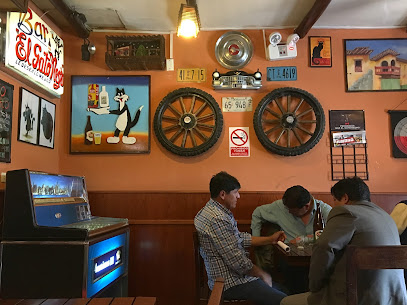
Local Phrases about Cusco Region
-
- HelloQanqo
[kang-koh] - GoodbyeAllinllachu
[al-leen-ya-chu] - YesArí
[ah-ree] - NoManan
[mah-nan] - Please/You're welcomeImaynalla
[ee-mine-yah-ya] - Thank youSulpayki
[sul-pai-kee] - Excuse me/SorryPaqarin
[pa-ka-reen] - How are you?Ima kachkanki?
[ee-ma kach-kahn-kee] - Fine. And you?Allin. Ima kachkan?
[al-leen. ee-ma kach-kahn] - Do you speak English?Inglis siminchu?
[ing-lees see-meen-chu] - I don't understandManan riqsiyki
[mah-nan reek-see-kee]
- HelloQanqo
-
- I'd like to see the menu, pleaseMenuyta qawaychikuy
[men-oo-ee-ta ka-wai-chi-kooi] - I don't eat meatNikumanta mishkiyki
[nee-koo-man-ta meesh-kee-kee] - Cheers!Kanpai!
[kahn-pai] - I would like to pay, pleasePagaraychikuyta munanki
[pa-ga-rye-chee-kooi-ta moo-nan-kee]
- I'd like to see the menu, pleaseMenuyta qawaychikuy
-
- Help!Yawarapay!
[ya-wa-ra-pie] - Go away!Imaynalla!
[ee-mine-yah-ya] - Call the Police!Pulisiyta llamanki!
[poo-lee-see-ta yam-man-kee] - Call a doctor!Yachakuyta llamanki!
[ya-cha-kooi-ta yam-man-kee] - I'm lostQhipaqaqaqa
[khee-pak-kak-kak] - I'm illSicki
[seek-kee]
- Help!Yawarapay!
-
- I'd like to buy...Quchuyta chaskikuy
[koo-chu-ee-ta chas-kee-kooi] - I'm just lookingMusuq chaskikuy
[moo-sook chas-kee-kooi] - How much is it?Kaymanchikuy?
[ki-man-chee-kooi] - That's too expensiveKaymanchu chinkachikuy
[ki-man-chu cheen-ka-chee-kooi] - Can you lower the price?Kaymanchikuy chinkachiyki?
[ki-man-chee-kooi cheen-ka-chee-kee]
- I'd like to buy...Quchuyta chaskikuy
-
- What time is it?Imaynata rikunki?
[ee-mine-ya-ta ree-koon-kee] - It's one o'clockJuk
[hook] - Half past (10)Iskay chaski
[ees-kai chas-kee] - MorningP'unchaw
[poon-chow] - AfternoonInti chay
[een-tee chai] - EveningCh'aski
[chas-kee] - YesterdayKunan
[koo-nan] - TodayKachun
[ka-choon] - TomorrowÑiqin
[nye-keen] - 1Huk
[hook] - 2Iskay
[ees-kai] - 3Kimsa
[keem-sa] - 4Tawa
[ta-wa] - 5Pichqa
[peech-kah] - 6Soqta
[sohk-ta] - 7Qanchis
[kahn-chees] - 8Pusaq
[poo-sak] - 9Iskayniyuq
[ees-kai-nee-yook] - 10Chunqan
[choon-kan]
- What time is it?Imaynata rikunki?
-
- Where's a/the...?Imayna...
[ee-mine-ya] - What's the address?Qhaway...
[ka-wai] - Can you show me (on the map)?Mapananchikuyta chinkachiyki?
[ma-pa-nan-chee-kooi-ta cheen-ka-chee-kee] - When's the next (bus)?Kanmanchikuy...
[kan-man-chee-kooi] - A ticket (to ....)Tikiti...
[tee-kee-tee]
- Where's a/the...?Imayna...
History of Cusco Region
-
Cusco, known as the 'navel of the world,' was founded around 1100 AD by Manco Capac, the first Sapa Inca, according to Inca mythology. This city served as the capital of the Inca Empire and was the political, military, and cultural heart of one of the largest empires in pre-Columbian America.
-
During the 15th century, under the rule of Pachacuti Inca Yupanqui, the Inca Empire expanded rapidly. Cusco was meticulously planned and developed with advanced engineering feats, including agricultural terraces and sophisticated irrigation systems. The city was adorned with grand palaces, temples, and plazas.
-
In 1533, Spanish conquistador Francisco Pizarro captured Cusco, marking the fall of the Inca Empire. The Spaniards began to impose their culture, religion, and architecture on the city. Many Inca structures were dismantled to construct colonial buildings. The most notable example is the Santo Domingo Convent, built atop the Inca temple of Koricancha.
-
In 1536, Manco Inca Yupanqui led a major rebellion against Spanish rule, laying siege to Cusco. Despite initial successes, the siege ultimately failed, and Manco Inca retreated to the fortress of Vilcabamba. This event marked the last significant attempt by the Incas to reclaim their capital.
-
Throughout the colonial period, Cusco remained an essential administrative center for the Spanish Crown. The city saw the construction of numerous churches, convents, and colonial mansions. The blend of Inca and Spanish architecture is evident throughout Cusco, creating a unique cultural and architectural fusion.
-
Cusco has experienced several devastating earthquakes, notably in 1650 and 1950. Each time, the city's resilient spirit led to reconstruction efforts. Remarkably, many Inca structures, built with the precise stone masonry technique, withstood these quakes better than their colonial counterparts.
-
In 1983, Cusco was declared a UNESCO World Heritage Site, recognizing its historical significance and cultural heritage. This designation has helped preserve and protect the city's rich legacy, making it a significant tourist destination and a living museum of Inca and colonial history.
-
Today, Cusco is a vibrant city that celebrates its rich history and cultural diversity. It serves as a gateway to the Sacred Valley and Machu Picchu, attracting millions of tourists annually. The city's festivals, including Inti Raymi and Corpus Christi, continue to honor its Inca and colonial past.
Cusco Region Essentials
-
Cusco Region is accessible primarily via Alejandro Velasco Astete International Airport in Cusco City. Direct flights are available from Lima, the capital of Peru, as well as from several international destinations in South America. From the airport, you can take a taxi or a pre-arranged shuttle to your accommodation. Alternatively, long-distance buses operate from major Peruvian cities like Lima, Arequipa, and Puno to Cusco City. The journey by bus can be long but offers scenic views of the Peruvian landscape.
-
Within the Cusco Region, transportation options include taxis, buses, and colectivos (shared vans). Taxis are convenient for short trips within Cusco City and can be hailed on the street or booked via apps. Buses and colectivos are economical options for traveling to nearby towns and tourist sites. For those looking to explore the Sacred Valley or Machu Picchu, trains operated by PeruRail and Inca Rail offer comfortable and scenic journeys. Renting a car is also an option, but be prepared for mountainous roads and varying driving conditions.
-
The official currency in Peru is the Peruvian Sol (PEN). Credit cards are widely accepted in hotels, restaurants, and larger shops in Cusco City and tourist areas. However, it is advisable to carry cash for smaller establishments and markets, as well as for tips and small purchases. ATMs are readily available in Cusco City and other major towns, but it is wise to withdraw sufficient cash before heading to more remote areas.
-
Cusco Region is generally safe for tourists, but petty crime such as pickpocketing and bag snatching can occur, especially in crowded areas. High-crime areas targeting tourists include the San Blas neighborhood at night and the area around the bus terminal. Always keep an eye on your belongings, avoid displaying valuables openly, and be cautious when using ATMs. Stick to well-lit and populated areas, especially after dark.
-
In case of emergency, dial 105 for police assistance, 116 for fire emergencies, and 106 for medical emergencies. Cusco City has several hospitals and clinics that provide medical care. It is advisable to have travel insurance that covers medical emergencies and evacuation. Pharmacies are available in Cusco City and larger towns for over-the-counter medications. For more severe health issues, seek help at a hospital or clinic immediately.
-
Fashion: Do dress in layers, as the weather can change quickly. Comfortable walking shoes are essential. Avoid wearing flashy jewelry. Religion: Do show respect when visiting churches and religious sites. Remove hats and sunglasses upon entering. Public Transport: Do be courteous and offer your seat to elderly passengers. Don’t eat or drink on public transport. Greetings: Do greet people with a friendly 'Buenos días' (Good morning) or 'Buenas tardes' (Good afternoon). A handshake is common. Eating & Drinking: Do try local dishes such as ceviche and guinea pig (cuy). Don’t drink tap water; always opt for bottled or purified water.
-
To experience Cusco Region like a local, visit the San Pedro Market in Cusco City for fresh produce and traditional goods. Engage in conversations with locals, who are often friendly and eager to share their culture and history. Attend local festivals such as Inti Raymi, the Inca Festival of the Sun, for an authentic cultural experience. Take the time to explore lesser-known ruins and trails, such as those in the Sacred Valley, for a more intimate and off-the-beaten-path adventure.
Trending Landmarks in Cusco Region
-
Historic Sanctuary of Machu Picchu
-
Plaza Mayor de Cusco
-
Mercado Central de San Pedro
-
Saqsaywaman
-
Qorikancha
-
Twelve Angled Stone
-
Moray
-
Q'enco Archaeological Complex
-
Plaza Túpac Amaru
-
Palacio del Inka, a Luxury Collection Hotel, Cusco
-
Church and Convent of Santo Domingo of Guzmán
-
Tambomachay
-
Puka Pukara Archaeological Complex
-
Centro Qosqo de Arte Nativo
-
Sagrado Garden
Nearby Cities to Cusco Region
-
Things To Do in Machu Picchu
-
Things To Do in Puno
-
Things To Do in Arequipa
-
Things To Do in Ayacucho
-
Things To Do in Copacabana
-
Things To Do in Huancayo
-
Things To Do in Ica
-
Things To Do in La Paz
-
Things To Do in Tacna
-
Things To Do in Arica
-
Things To Do in Lima
-
Things To Do in Cochabamba
-
Things To Do in Iquique
-
Things To Do in Huaraz
-
Things To Do in Sucre













